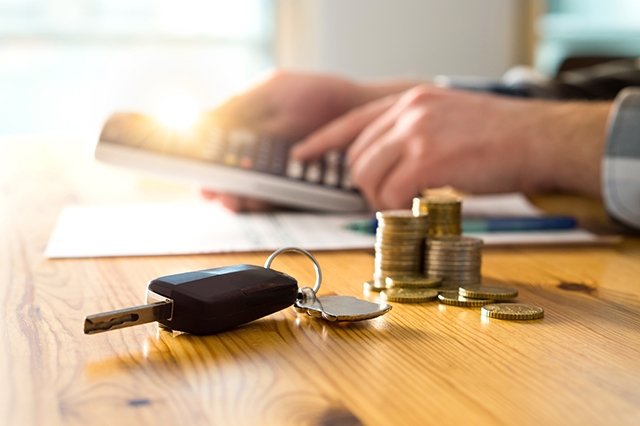Why You Need A Car Maintenance Fund

It’s not always cheap to keep up with the maintenance of your car, but it’s something we all have to do. Instead of allowing breakdowns and repairs (whether they’re major or minor) to sneak up on you, though, it’s wise to plan ahead and have a fund set aside to cover all auto-related expenses.
You’d be surprised by how much stress such a fund can take off your shoulders.
March is National Credit Education Month, and having a car maintenance fund can prevent you from going into significant debt. Let’s discuss how!
Do I Really Need a Maintenance Fund?
Think of all the things your car needs, big and small. Some things don’t cost much, like oil changes, tire rotations, and new wiper fluid, but the same can’t be said for everything a car needs. There are bigger things, too, like registration fees, snow tires, and new brakes. Don’t forget the things that pop up out of nowhere, like fixes for the transmission, battery, and suspension.
Needless to say, costs can add up – especially if you have two or more things on the docket at once. The last thing you want is to be caught off-guard by the total the mechanic gives you. You don’t want to forego maintenance, either, because that could damage your car and you might end up paying even more in the long-run.
The best-case scenario is being prepared with money from your car maintenance fund. When you have the money, you’re not caught with empty pockets and you won’t have to give up any necessities in order to afford service. It’s a win/win scenario.
At Interra Credit Union, it’s easy to open a savings account dedicated solely to car expenses. Check out our personal savings page, or talk to one of our experts to learn more.
How Much Should I Save?
A good rule of thumb is to keep anywhere between $600-$1,000 in your car maintenance fund, but no one will fault you if you save more than that.
Keep in mind the make, model, and age of your vehicle – and also whether you bought it new or used. Traditionally, new cars (and newer models) require less maintenance than used ones (or older models). Larger vehicles come with pricier repairs and replacements. Every model is different, though, so if you have an older model that’s known for its reliability, you might end up paying less for it yearly than someone with a newer, less dependable model.
Additionally, while newer cars may require less maintenance, the car payment is typically higher. An older car may no longer require a monthly payment, but the maintenance fees may be more demanding.
A couple more details to keep in mind include the condition of your car (if your car has had a rough life, you might prepare to pay more for repairs) and your driving habits. Texting while driving, speeding, aggressive driving are a few of the top causes of motor vehicle crashes in the U.S. Even a small crash or parking lot fender bender can mean an expensive repair bill.
How to Create a Car Maintenance Budget
Now that you’ve decided you’re ready to start saving, you’re ready for the tough stuff – actually putting money away. We promise, though, it’s a lot easier than it seems once you know how to put a budget together.
Collect Receipts and Maintenance Records
Knowing your car’s maintenance history gives you a good idea of what’s coming. It also lets you know just how much you’ve spent on car maintenance in the past.
Gather your receipts and records from the maintenance you’ve had done over the last year – oil changes, tire rotations, big and small repairs, etc. – and add it up. Divide that amount by 12, and that’s how much money you should put away each month in your maintenance fund.
Take A Look At Your Finances (And Your Car)
Adjust the number that you got during step 1 to accommodate your car’s current condition. Be realistic when it comes to how much you can set aside in relation to your take-home salary, but also plan ahead for major expenses so the cost doesn’t come as a nasty surprise.
Expect the Unexpected
Once you’ve figured out how much money you should put away for your maintenance fund, it’s wise to increase that amount by as much as you can afford – that way, you won’t be scrambling if you run into major trouble with your car.
One thing you should never do is dip into your car maintenance fund when you need a little cash on a rainy day. It can be tempting, but think of how helpful it’ll be to have money when you most need it for your car. Don’t touch the fund unless you need money for auto-related expenses!
Start Saving With Interra
At Interra, our personal savings accounts have you covered when it comes to creating a car maintenance fund. Get in touch with us to start saving today

